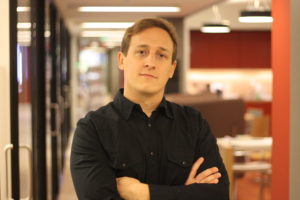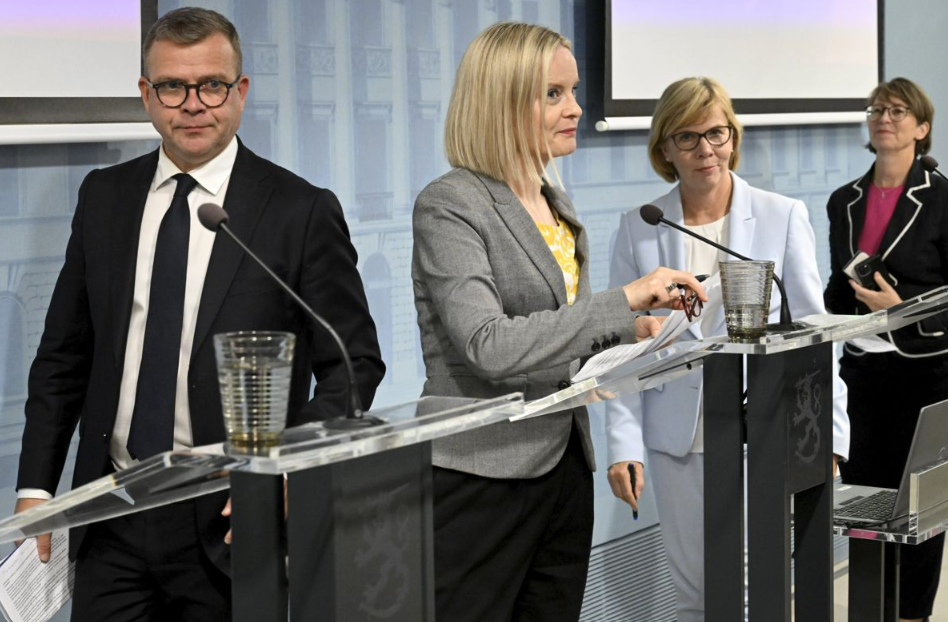Podcast: Duck Pond #4: Att kämpa för service på svenska
Att välja svenska som integrationsspråk innebär att du måste ta dig an vissa strider, säger Gregory Pellechi i det senaste avsnittet av podcastserien Duck Pond.
– Att välja svenska är en kamp, inte bara för mig utan för min fru, hennes familj och alla som talar svenska. Det handlar om att kämpa för sin rätt att tala svenska och få service på svenska, säger Greg Pellechi.
Att Finland är ett tvåspråkigt land betyder inte att alla talar båda språken. Det märkte Greg extratydligt då han skulle hitta intervjuade för det här avsnittet, men ingen på TE-byrån i Helsingfors gick med på att ställa upp på en intervju på svenska. Istället fick Greg tala med Anita Sahlström från TE-byrån i Österbotten.
Svenskan i Finland är i en svår situation och kunde behöva fler som talade språket, menar Greg. Men det görs svårs för invandrare att lära sig svenska då det inte finns integrationskurser i lika stor utstreckning på svenska som på finska, eller då det inte går att får service på svenska.
När Greg startade projektet ville han ge en ärlig bild av hur det är att integreras på svenska i Finland, men utan att skrämma bort någon. Å andra sidan blir bilden inte komplett om man inte talar om hur svenskspråkiga finlänadre bemöts idag.
– I slutändan kan jag inte fatta beslut om vilket språk någon annan ska integreras på. Men det bör heller ingen annan göra.
I detta avsnitt hörs Tobias Pötzsch, Ida Schaumann och Corinna Tammenmaa.

The latest episode of The Duck Pond finds Gregory Pellechi exploring whether integration in Finland is actual assimilation or something else.
I have to say now, before I go any further, that choosing Swedish is a fight. It’s one that I, my wife, her family and every Swedish speaker in Finland has. It’s the fight for the very right to speak Swedish, and be served in Swedish.
Finland is a bilingual country. That doesn’t mean everyone has to know both languages. Simply that everyone has the right to speak and be spoken to in both languages. And should any Finnish-speaker remark that this is Finland and you should speak Finnish, turn their logic on them and remind them that it’s a bilingual country and they should speak Swedish.
Swedish speakers, time and again, will have to forgo using their mother tongue if they wish to get something accomplished in a timely manner. For this very podcast I was unable to get someone from the TE-byrå in the capital region to speak with me.
Here in Helsinki the unemployment office would not provide me with someone who could speak in an official capacity in Swedish, only Finnish. That’s not to say people there don’t speak Swedish, I converse with my representative at the unemployment office happily in Swedish.
Yet no one was able to address my press enquiries in Swedish. And while I was given the excuse that the person in charge did not feel comfortable speaking Swedish or English, that’s not the point. Civil servants, in most positions, are supposed to be able to speak both Finnish and Swedish. The result, I had to speak with Anita Sahlström from the TE-byrå in Ostrobothnia.
Swedish is in a difficult position in Finland. It needs more speakers. But the powers that be make it difficult to do so through overtly insidious means such as not having Swedish language integration courses or equally dishonest covert means of denying people access to Swedish through inaction.
This led to this week’s podcast episode focusing on assimilation not just of immigrants but Finland Swedes. In starting this project I wanted to present an honest account of what it’s like to integrate in Finland in Swedish. But in doing so I also didn’t want to scare anyone off. Yet if I didn’t discuss the situation faced by Swedish speakers then I wouldn’t be giving other immigrants all of the relevant information.
In the end I can’t make the decision of which language to integrate in for others. But neither should anyone else.
Today’s episode included Tobias Pötzsch, Ida Schaumann and Corinna Tammenmaa.








